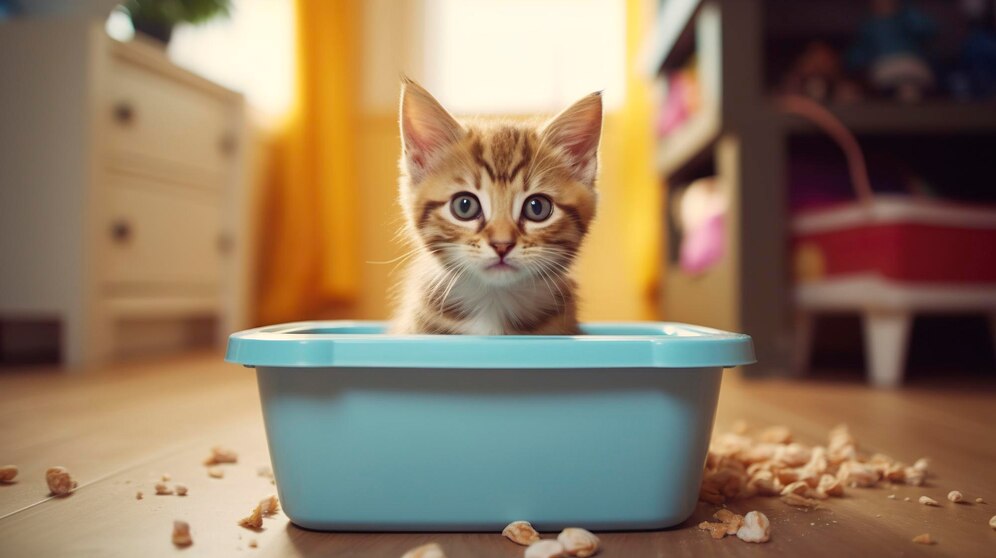Have you ever noticed your cat avoiding the litter box or, even worse, making a mess elsewhere? This could be a sign that you’re not providing enough litter boxes. Many cat owners underestimate how important the right number of litter boxes is to keep their cats comfortable. Read Why Is My Cat Peeing Outside the Litter Box?
Cats are naturally clean creatures, and their bathroom habits are crucial to their happiness. But how many litter boxes are enough to ensure they feel secure? Whether you have just one cat or several, understanding the right balance can make all the difference, helping to prevent accidents and keep your home cleaner. Read Why Does My Cat Follow Me Everywhere?
Imagine a home where your cat always uses the litter box without any issues. By getting the number of litter boxes right, you can create a more peaceful environment for both you and your cat, reducing stress and unwanted messes.
So, how many litter boxes do you really need? Keep reading to find out!
Read first Why Does My Cat Follow Me To The Bathroom
How Many Litter Boxes Per Cat?
When deciding how many litter boxes you need, the rule is simple: have one litter box per cat, plus an extra one. This helps meet your cat’s needs while ensuring their environment is clean and stress-free. Here’s why this works.
For a single cat, having at least two litter boxes gives them options. Cats are naturally territorial, and they may prefer using one box for urination and another for defecation. Offering multiple boxes helps accommodate this behavior and makes your cat feel more comfortable.
The rule becomes even more important if you have multiple cats. Having enough litter boxes prevents competition between your cats and reduces the chances of them avoiding the litter box. Some cats don’t like to share, and providing each one with their own box, plus an extra, helps reduce conflict and keeps your home cleaner.
Where you place the litter boxes is also important. Spread them out around your home, particularly if you live in a house with more than one level. If you place them too close together, cats might treat them as a single space, which can lead to problems. By spacing them out, you give your cats the freedom to find a quiet spot to do their business.
Another reason for having more litter boxes is hygiene. Too few boxes, especially in a multi-cat home, means they will fill up faster. Cats are very clean animals, and if the litter box becomes too dirty, they might stop using it. Regular cleaning and having enough boxes will keep things more sanitary for both you and your cat. Read Why Is My Cat Pooping Outside the Litter Box?
For older or special-needs cats, having extra litter boxes makes things easier for them. If they have trouble moving around or getting to the litter box in time, having more boxes in convenient locations can prevent accidents.
In the end, the “one box per cat, plus one extra” rule works because it takes into account your cat’s natural behavior, reduces territorial stress, and maintains a cleaner environment. Your cat will be more likely to use the litter box consistently, and that’s a win for both of you.
Alternatives to Traditional Litter Boxes
For alternatives to traditional litter boxes, you can consider a few options. Self-cleaning litter boxes reduce the need for frequent scooping and keep the box cleaner for longer, though some cats may need time to adjust. Disposable litter trays are convenient for short-term use and can be thrown away after a week or so. Pee pads can also work for some cats if they prefer a litter-free surface, but they need regular changing to avoid odors. Read How Often Should You Change Cat Litter?
Toilet training systems are another alternative, teaching your cat to use the toilet instead of a box, though this requires patience and time. Outdoor litter areas can be set up in a safe spot outside with sand or soil, mimicking a natural environment. You can also use alternative materials like wood pellets, shredded paper, or sand inside a traditional box for a more eco-friendly option. Some people even opt for litter-free enclosures to train their cats to go in designated indoor areas, though this takes consistent training.
Read Also
How many litter boxes for 4 cats?
For four cats, the recommended number of litter boxes is five. This follows the general rule of one litter box per cat, plus one extra. Having five litter boxes helps ensure that each cat has access to a clean box at all times, reduces competition for resources, and minimizes the chances of accidents outside the box.
Read Also



